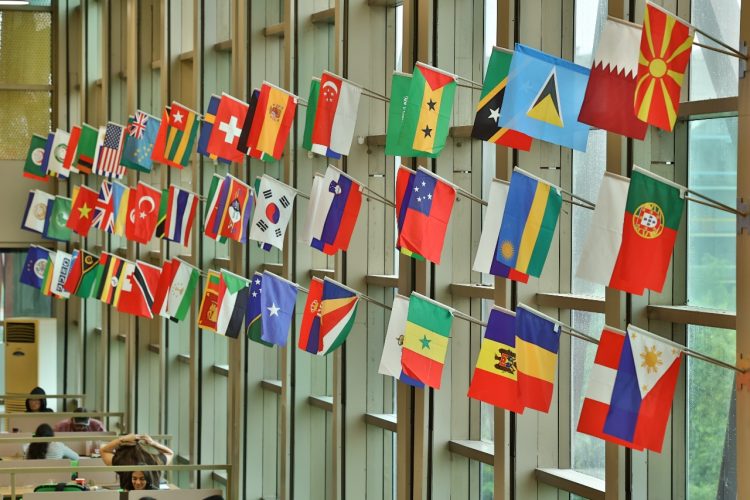1. Introduction: A World in Transition
The international system in the 21st century is undergoing unprecedented shifts.
Globalization has interconnected economies and cultures, yet rising geopolitical competition, climate change, technological disruptions, and new security concerns have made the landscape of international relations more complex and fragile.
Understanding today’s international relations requires moving beyond traditional notions of military alliances and diplomatic treaties to include transnational networks, non-state actors, and global challenges.
2. Historical Context: From Bipolarity to Multipolar Complexity
To understand the present, it is crucial to recall the past:
- Cold War Bipolarity (1945–1991): The U.S.–Soviet rivalry shaped global alliances and conflicts for nearly half a century.
- Unipolar Moment (1991–2008): The post-Cold War era saw the United States as the dominant power, with globalization accelerating economic interdependence.
- Emerging Multipolarity (2008–Present): The rise of China, India, and regional powers has challenged unipolarity, resulting in a more fragmented global order.
This historical shift underscores the evolving distribution of power and the increasing need for cooperative frameworks.
3. Major Contemporary Drivers in International Relations
3.1 Geopolitical Competition
Great power competition is resurging:
- The U.S.–China rivalry is redefining global trade, technology, and military strategies.
- Regional conflicts in areas such as Eastern Europe and the South China Sea illustrate the persistence of territorial disputes and strategic competition.
3.2 Globalization vs. Fragmentation
While global supply chains and digital platforms have integrated economies, there is also:
- Economic Nationalism: Countries adopting protectionist policies.
- Geopolitical Fragmentation: Growing divisions in technology standards, trade blocs, and security frameworks.
3.3 Technology as a Strategic Asset
Technological innovation has become a new domain of international power:
- Competition over AI, semiconductors, and green technologies is influencing both economic and security policies.
- Cybersecurity and information warfare have introduced non-traditional threats to global stability.
3.4 Global Challenges Beyond Borders
Issues such as climate change, pandemics, and migration transcend national borders:
- These require collective action, yet often face political resistance due to conflicting national interests.
- Non-state actors—NGOs, corporations, and even individuals—now play a greater role in shaping international outcomes.
4. Regional Perspectives
4.1 The Asia-Pacific
The Asia-Pacific region has emerged as the center of global economic growth, yet it is also marked by:
- Territorial disputes in the South and East China Seas.
- Security concerns over North Korea’s nuclear program.
- Deepening U.S.–China strategic competition.
4.2 Europe
Europe faces:
- Internal Cohesion Challenges: Brexit and differing approaches to migration and energy policy.
- External Security Concerns: Russia’s war in Ukraine has reshaped Europe’s defense posture and reinvigorated NATO.
4.3 The Global South
Countries in Africa, Latin America, and South Asia are:
- Seeking more voice in global institutions.
- Becoming arenas of competition for infrastructure, energy, and technological investment by major powers.
These regional dynamics demonstrate the diverse and asymmetric nature of global relations.

5. Key Theoretical Lenses
5.1 Realism
Realists focus on power, security, and survival in an anarchic international system.
They explain rising tensions as inevitable rivalries between major powers.
5.2 Liberal Institutionalism
Liberals emphasize the role of institutions, trade, and international law in fostering cooperation.
They highlight successes like the Paris Climate Agreement, yet also note the fragility of such cooperation.
5.3 Constructivism
Constructivists stress the importance of ideas, norms, and identities, arguing that national interests are shaped as much by perception and culture as by material power.
Applying these theories together provides a comprehensive framework for understanding the complexity of modern international relations.
6. Emerging Issues Reshaping International Relations
6.1 Climate and Environmental Diplomacy
As climate change intensifies, countries must negotiate shared responsibilities for emission reductions, often testing trust and equity in global partnerships.
6.2 Digital Governance
The competition over data sovereignty, internet regulation, and emerging AI standards reflects the growing strategic importance of the digital realm.
6.3 Global Health Security
The COVID-19 pandemic exposed the vulnerability of international health cooperation, underscoring the need for better preparedness and equitable vaccine distribution.
6.4 Migration and Demographics
Demographic shifts and forced migrations are influencing both domestic policies and cross-border relations, often driving humanitarian and political crises.
7. Case Study: U.S.–China Relations
The U.S.–China relationship exemplifies the challenges of the 21st century:
- Economic Interdependence: Both nations remain vital trade partners despite rising tensions.
- Strategic Rivalry: Competition over advanced technologies and influence in international institutions.
- Global Impact: Their interaction affects climate negotiations, global markets, and regional security.
This case highlights the dual nature of interdependence and competition shaping modern geopolitics.
8. Toward a Cooperative Global Order
Addressing today’s challenges requires:
- Strengthening Multilateral Institutions: Reforming organizations like the UN and WTO to reflect new power realities.
- Inclusive Development Strategies: Bridging the gap between advanced and developing economies.
- Building Trust in Shared Goals: Fostering climate cooperation, cyber norms, and responsible AI development.
International relations must evolve into a more networked and problem-solving paradigm to handle future crises.
9. Conclusion: Navigating a Complex Future
The 21st century’s international relations are defined by both interdependence and contestation.
While the risks of conflict remain significant, opportunities for collective problem-solving have never been greater.
A successful global order will depend on leaders’ ability to balance power with cooperation, adapt institutions to new realities, and prioritize shared human security over narrow national interests.
















































